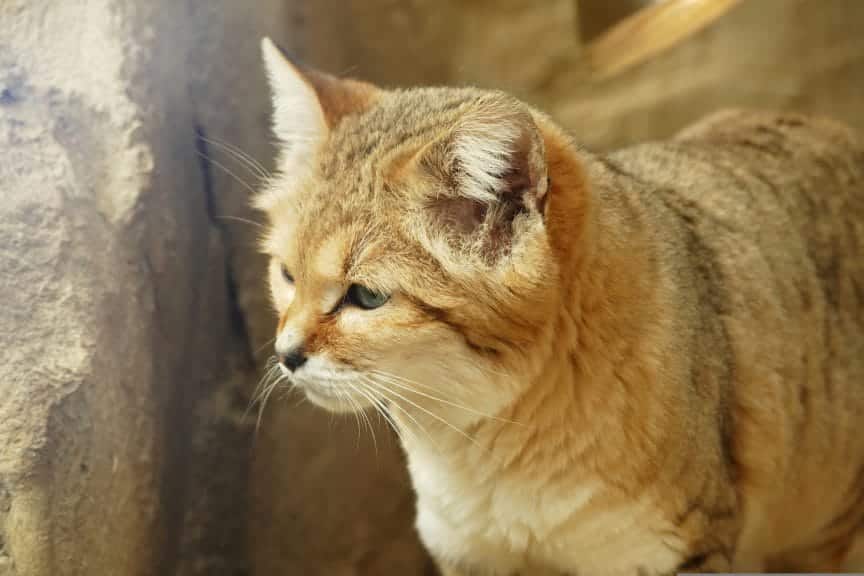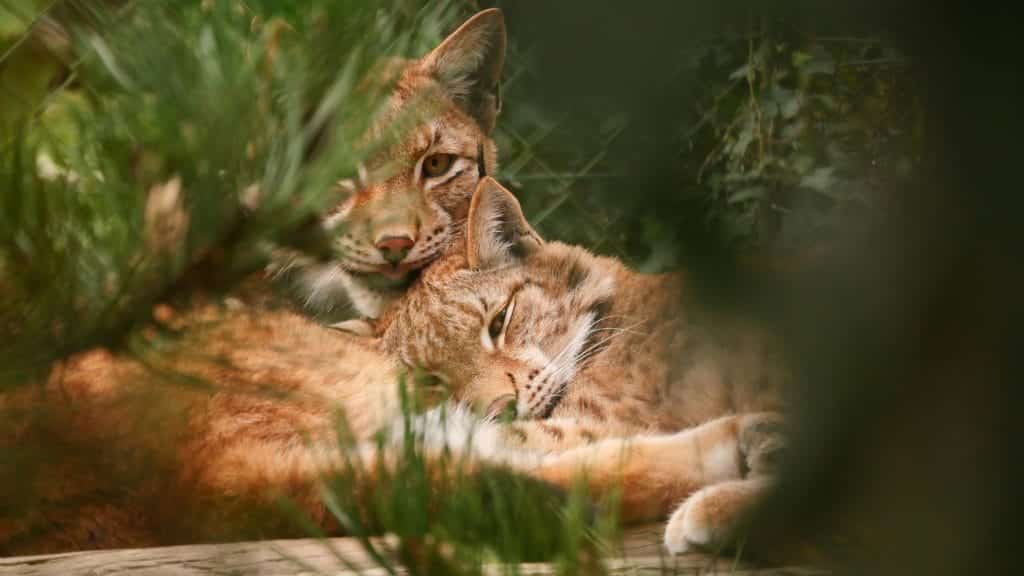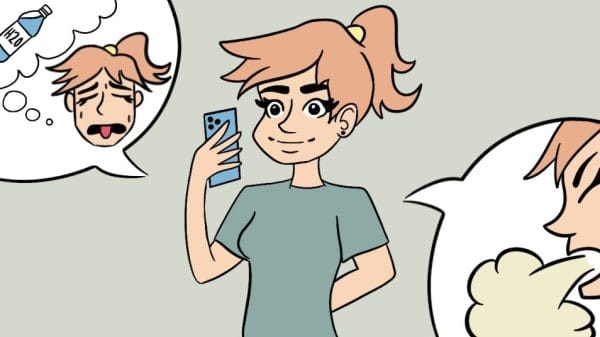Tons of wild animals are simply too cute not to pet, or at least try to, so here are some Wild Cats the internet is dying to pet.
‘If not friend, why friend shaped?’ is a recent trend going around social media. Every few weeks, I see a new wild cat with internet access in a chokehold.
The trend has generated memes like the one below but has also been a great way to educate people on the different kinds of Wild Cats.
I want to take it a step further and delve into facts about the cats as well as the efforts of the conservations that are helping the endangered species.
The latest Wild Cat to be brought into the spotlight is the Sand Cat. So, I believe it is only right to kick off this list with the adorable desert cat.
1. Sand Cat
Sand Cats are native to deserts in both Africa and parts of Asia. Inhabiting the Sahara desert and Arabian Peninsula.
Their small size and kitten-like appearance have captured the internet’s hearts. They weigh anywhere between 3 and 7.5 pounds. Which, in comparison, is the same as a small to medium-sized watermelon.
Like any living thing surviving in the desert, water is an essential commodity. Sand cats have evolved to get most of their water source from their prey. Which mainly consists of small rodents, birds, insects, reptiles, and spiders.
Currently, the Sand Cat is not endangered, as it ranks as ‘least concern’ in terms of conservation status. Although, that was not the case in 2002 when the International Union for Conservation of Nature (IUCN) listed them as ‘near threatened.’ This was because of habitat degradation, which is when natural habitats cannot support native species due to factors like pollution, invasive species, or the overuse of natural resources.
Conservations like the ‘Al Ain Zoo’ have a center specifically for preserving Sand Cats. It boasts the largest number of protected Sand Cats in the world.
2. Pallas Cat
One of the most viral clips of the Pallas Cat showcases it sitting on its tail. This sent social media into a frenzy. It seemed like everywhere I looked, there was a clip or edit of a Pallas Cat.
Although sitting on their tail looks cute, it actually has a proper function. They do this to conserve warmth and add cushioning from the snow.
They can be found distributed in small fragments across the grasslands and montane steps of Central Asia.
The elusive Pallas Cats are currently listed as ‘near threatened.’ The ‘Pallas Cat International Conservation Alliance’ (PICA) believes that the wild cat ”is unlikely to go globally extinct in the near future”. However, they do note the threats the cats face. Such as the loss of their prey, being accidentally captured, and habitat degradation, to name a few. This species of wild cat forms small populations in their habitats, and because of this, they’re declining. The conservation notes that it is more likely that localized or regional groups will go extinct.
Thankfully, many conservation organizations like PICA, Big Cat Rescue, and Felidae Conservation Fund are putting in tremendous effort to help make sure the Pallas Cat doesn’t go extinct.
3. Black Footed Cat
Holding the title of the smallest Wild Cat in Africa, the Black Footed Cat is a ferocious cutie pie.
As much as you’d want to, this is one kitty you don’t want to pet. Hailed as the deadliest cat on Earth, it boasts a 60% hunting success rate. In comparison, a single lion has a success rate of 17-19%. Granted, the two cats are going after different types of prey.
Meilan Solly – Smithsonian Magazine
This Wild Cat’s small stature makes it difficult to film as they can disappear into the tall grasses of the Savannah. Which means more work for those filming nature documentaries.
According to IUCN, the black-footed cat is listed as ‘vulnerable’. Their main threat is larger predators. This Wild Cat is difficult to be kept in captivity as they have very specific habitat requirements. Fortunately, the Wuppertal Zoo in Germany ”has had excellent breeding success” according to the ‘International Society for Endangered Cats’. The Wuppertal Zoo is also where the large majority of the black-footed cat’s population in captivity is located.
4. Kodkod
Found in Central and Southern areas of Chile, as well as some parts of Argentina, the KodKod is the smallest feline in the Americas.
Known locally as the güiña, this Wild Cat is found in moist habitats like rainforests. This Wild Cat is essential to their ecosystems as they help control the population of small mammals and birds.
Not only are they skilled hunters but they are also excellent climbers.
Like most Wild Cats, the loss of their habitat is one of the main factors in their population decline. They are listed as ‘Vulnerable’ by the IUCN as of 2002, with less than 10,000 left.
5. Lynx
Found in the forests of Europe, Asia, and North America, the Lynx is specially adapted to living in deep snow conditions. Their thick coat and large paws allow them to navigate and live in extreme cold conditions.
I don’t know about you, but I think hugging this fluffy wild cat is just what I need to do before I drift off to sleep. Their fur can reach up to 4 inches in length! Though I don’t think I would be waking up.
Much like the KodKod, the Lynx is essential to their ecosystems as a top predator. Although they are extinct in Britain their numbers are recovering in other areas of Europe. Unfortunately, the Iberian Lynx is the most endangered species of Wild Cat as of 2013. With only 300 left in the mountain areas of Southern Spain.
The EuroNatur charity, along with its partners, are dedicated to the conservation of the Lynxes. They are collecting data to help better develop conservation strategies. It will also reintroduce previously captured lynxes to scarce population areas and work to establish protected areas for them.

Many Wild Cats face extinction due to loss of habitat and lack of prey. With the help of social media, more and more people are learning about different species they previously didn’t know, which can spark an interest in learning more about them and the struggles they face.
Hopefully, this article can be a stepping stone to creating more interest in these felines.













